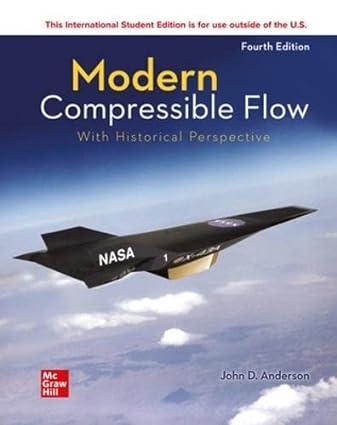In the discussion of Computational Fluid Dynamics, the time-dependent (time-marching) solution of isentropic subsonic-supersonic quasi-one-dimensional flow is
Question:
In the discussion of Computational Fluid Dynamics, the time-dependent (time-marching) solution of isentropic subsonic-supersonic quasi-one-dimensional flow is given, albeit under rather controlled conditions, such as the use of qualitatively proper initial conditions. Using the computer program you wrote for problem 12.1 and the same nozzle shape, explore the effect of different initial conditions on the behavior of the time-marching process. Specifically for one exploration, feed in constant property initial conditions, i.e., assume density, velocity, and temperature are constant through the nozzle at time zero, equal to their reservoir values. Compare the time-marching behavior with that from problem 12.1. Do not be surprised if you cannot get a solution (i.e., if the attempted solution "blows up" on the computer). What can you say about the importance of the selection of initial conditions?
Data From Problem 12.1:
Consider a convergent-divergent nozzle of length \(L\) with an area-ratio variation given by \(A / A^{*}=1+10|x / L|\), where \(-0.5 \leq x / L \leq 0.5\). Assume quasi-one-dimensional flow and a calorically perfect gas with \(\gamma=1.4\).
Step by Step Answer:






